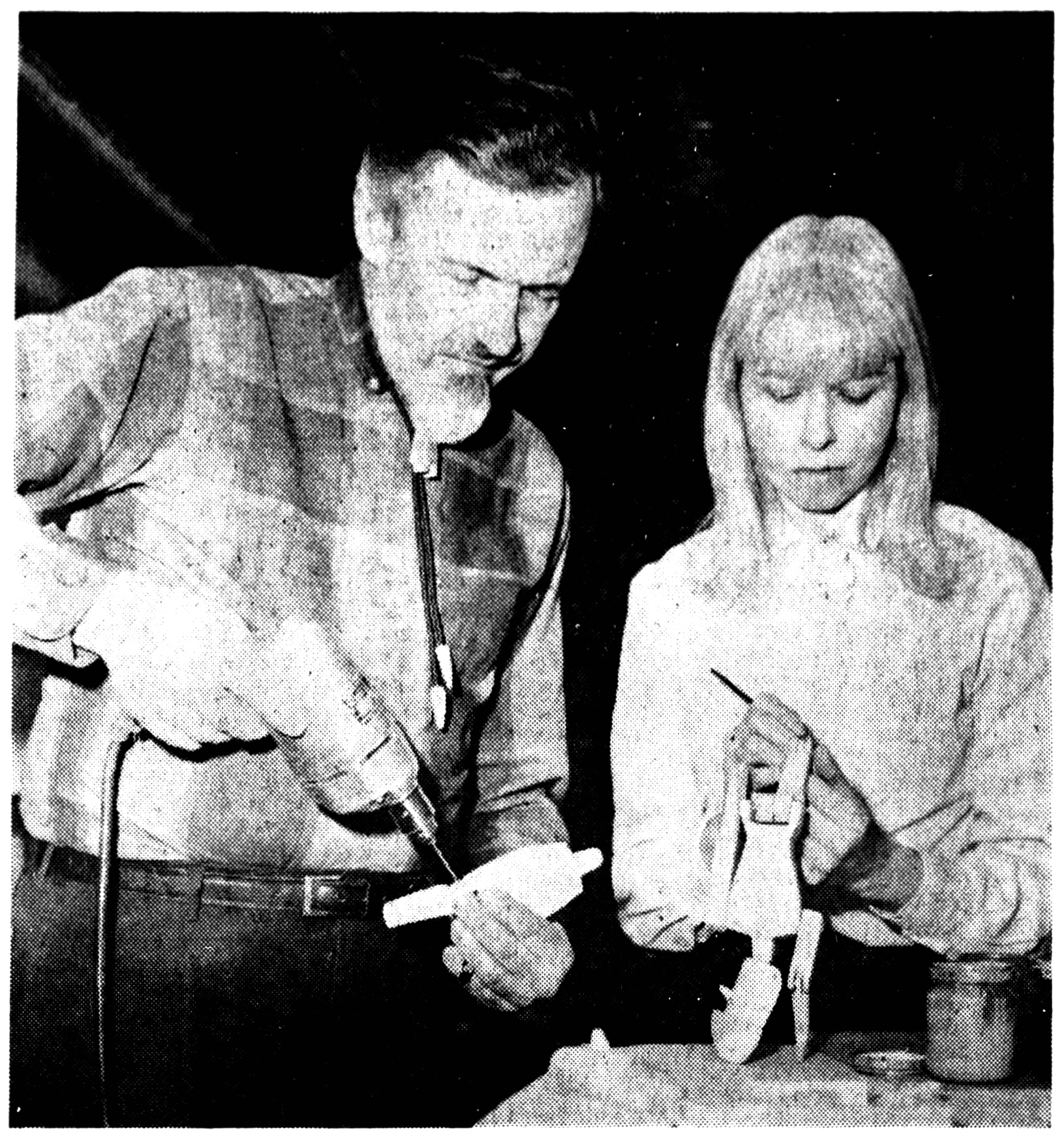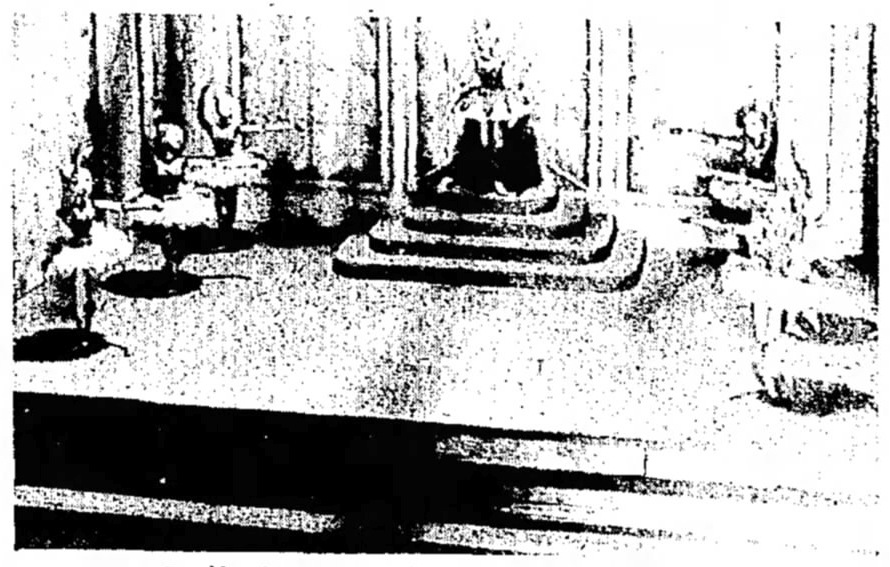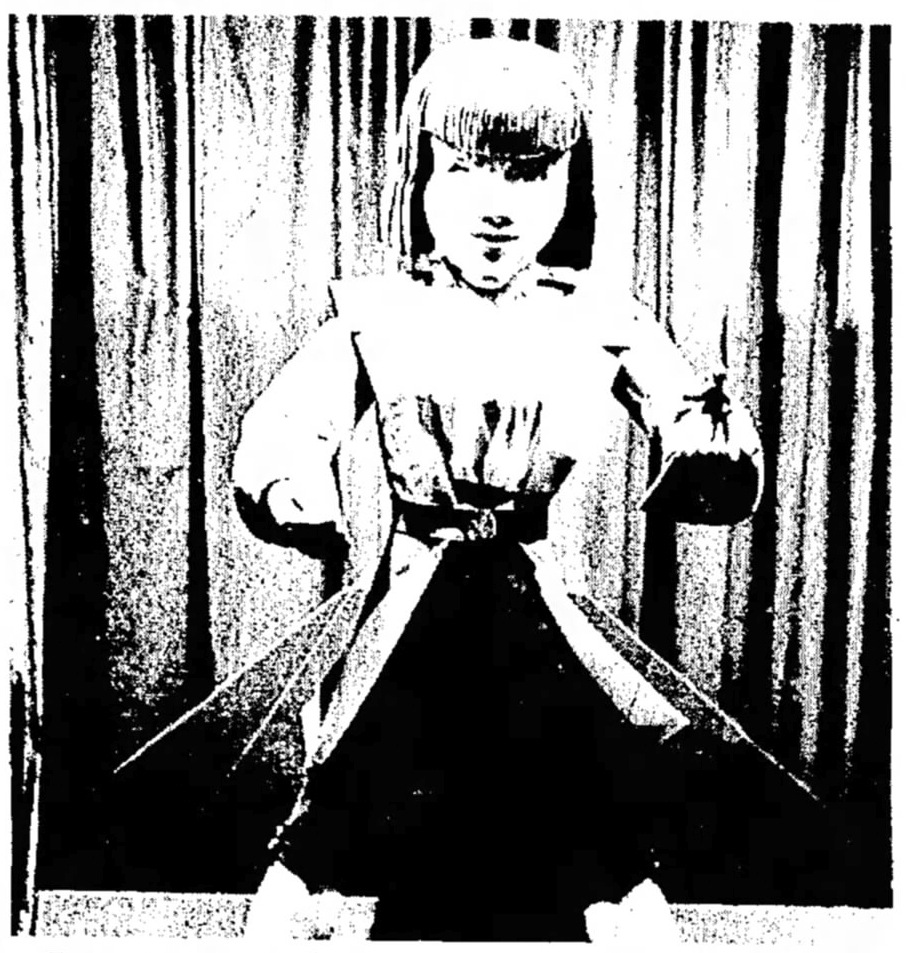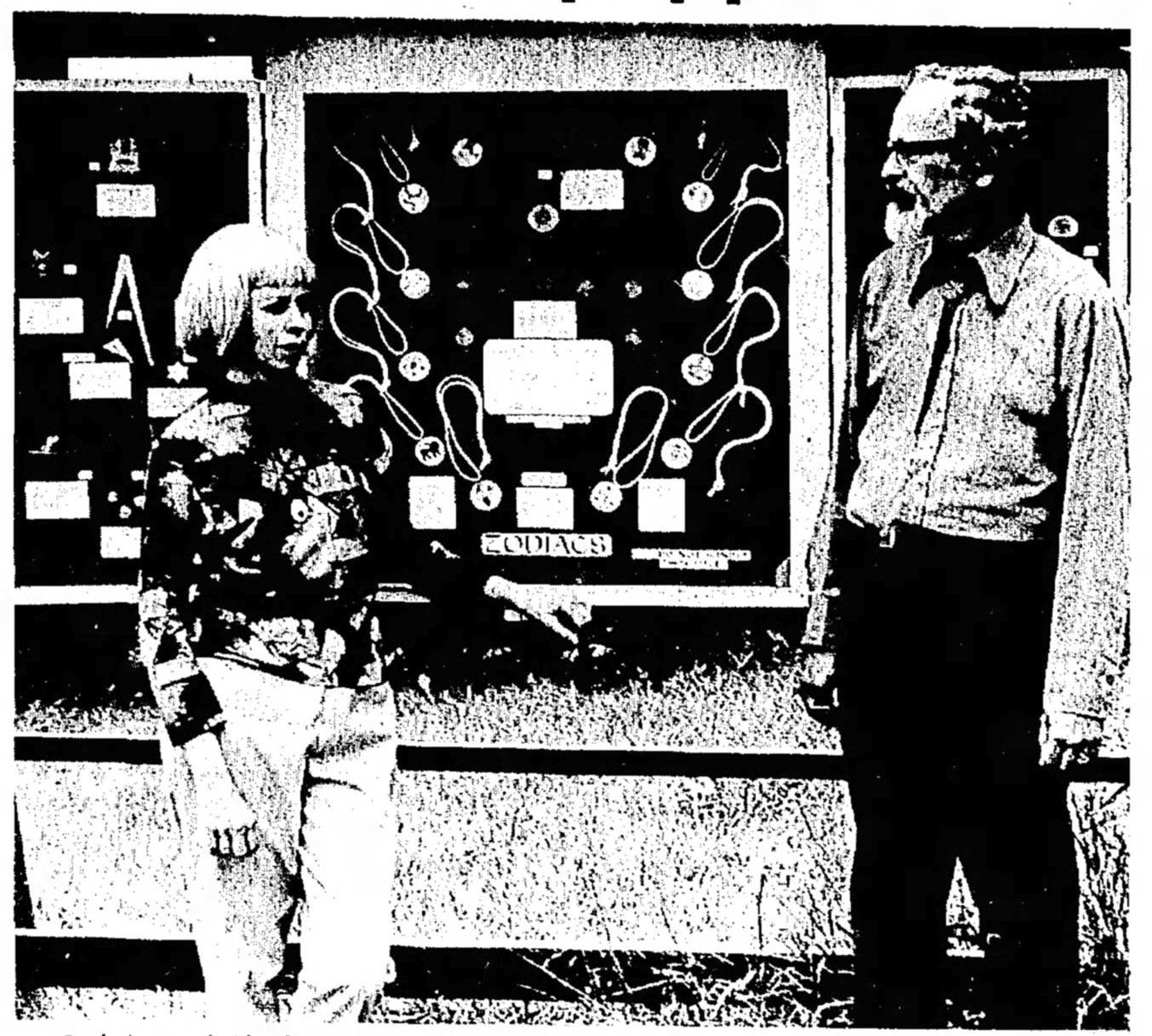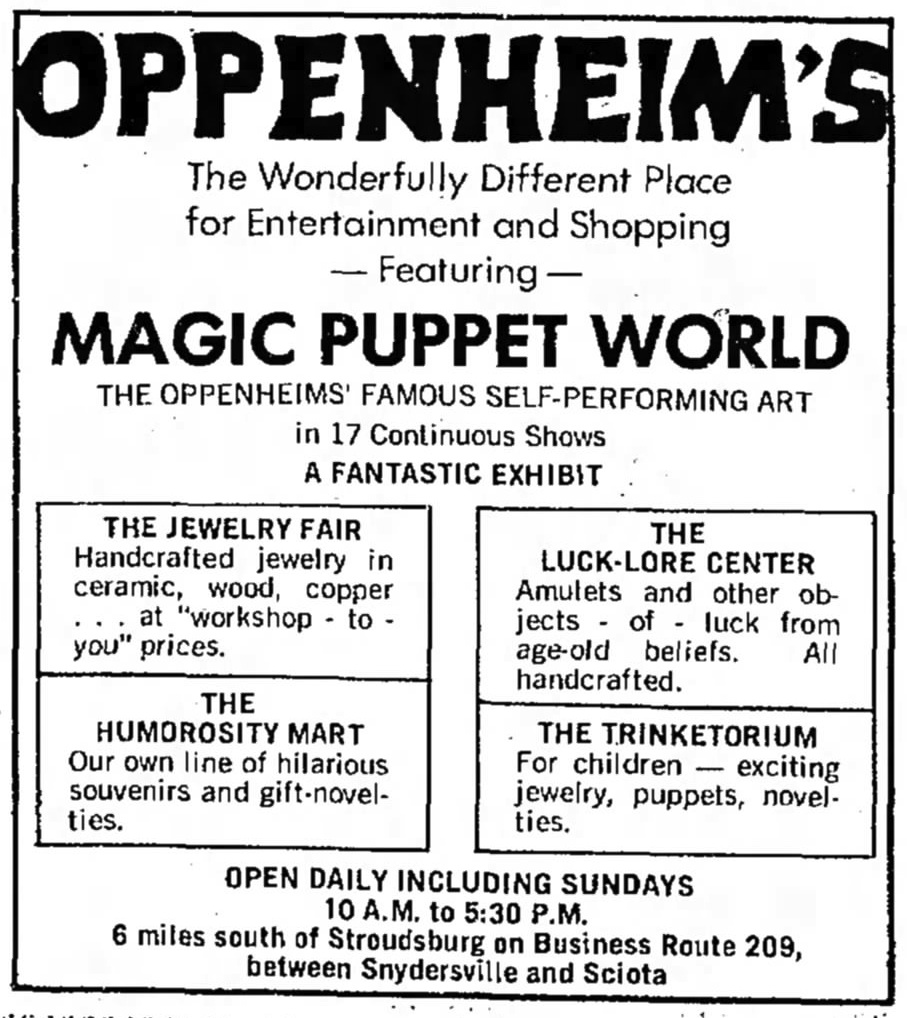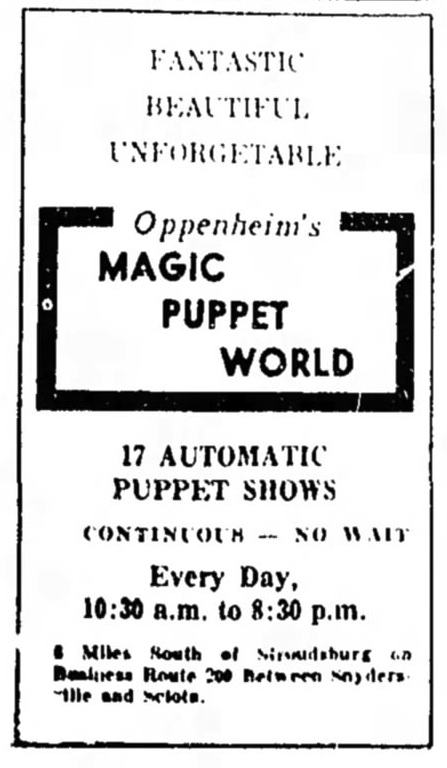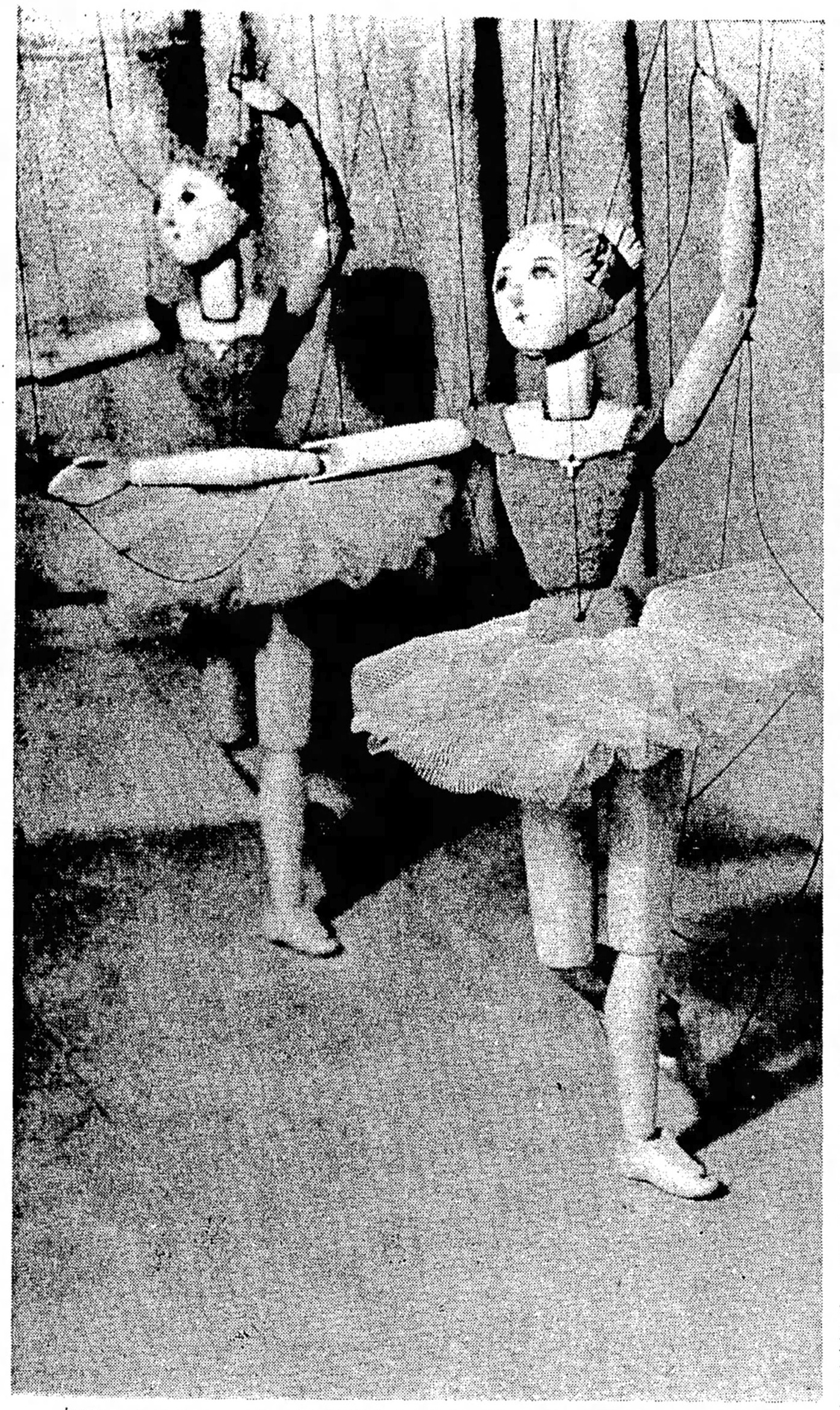The Magic Puppet World Revisited
BACK in 2015 during our first Mosquito Month, we ran a series of articles from The Pocono Record that covered Oppenheim’s Magic Puppet World. In 2019 we ran an additional article from the nearby Allentown Morning Call. But what celebration of the Three Mosquitoes and their creator and chronicler Ralph Oppenheim could go by without a mention of Oppenheim’s Magic Puppet World? Especially since we just came upon an artifact from the time!
Yes, just recently we stumbled upon one of the hand-made pennants that they used to sell at the gift shop at Oppenheim’s!

It’s a small orange felt pennant measuring 3¾” x 8¼” with heavy dark blue yarn ties. Emblazoned upon it are the words “Magic Puppet World” and a joyous printed figure with a wooden ball head and red body with arms up and legs spread.

While the hair is painted with a fine brush; Mrs. Oppenheim paints the eyes, nose and mouth with a cellophane cone filled with lacquer.
So in celebration of finding the pennant, we’re presenting another article from The Pocono Record we passed over due to it’s poor picture—but it does have lots of good information.
Oppenheim puppets tireless performers for visitors
The Pocono Record, Stroudsburg, Pa • 20 July 1968
SCIOTA — In Sciota, right off old Route 209 there Is a continuous show going on and—a lot of show for the money!
Its performers are the puppeteerless puppets of Oppenheim’s magic puppet world who, If animated, would be a highly unionized group of theatricals with large overtime paychecks and gleeful over their immunity from artistic exploitation.
Alas, however, they are inanimate and by fate, doomed to dance their little logs off until their repertoire is exhausted and the last Pocono vacationer who has heard of them in the course of a day, leaves the theatre.
Their creator is Ralph Oppenheim who, having dreamed them up in the first place and having possessed unwavering convictions for their artistic immortality, remains their impressario.
Their choreography is attributed to Shirley Oppenheim, and their current manager (no pun intended) is the local light company—another way of saying that a highly artistically endowed man and wife team, in an old converted barn in Sciota, are the owners of automation-controlled puppetry, nationally recognized as a completely new medium of entertainment.
Ingenious Creativity
The experience of those who will be visiting this unusual Pocono attraction will doubtless provoke admiration for the ingenious creativity, singularly Oppenheim, which lies behind the magic puppet show. Audiences will probably be divided.
There will be those who will approach the show on a purely emotional level and get a royal bang out of the rescue of Juliet by two rival Romeos; or the vagaries of the mind in “The Dollmaker’s Dreamâ€; or the little clown being shot from a cannon in “The Cannonball Clowns”; or the ballerina dancing down a stairway before her solo in “The Doll Ballet.”
Other Segment
The other segment of the audience will be those of strong engineering and mechanical leanings who will try to figure out “what makes the wheels go around”, and probe the intricacies of the cams, cogs, and cajoles of the moving parts, all Einsteinian manifestation of the Oppenheim mind.
Many prefer the emotional approach to entertainment, not impervious, however, to appreciating the daily vicisitudes of the Oppenheims who have to concern themselves with the delicate “taut†of the finest silk thread, the humidity level and its influence on equipment, etc., to assure that the clown in “Cannonball Clowns” really does get booted out of the cannon before the thread holding him up doesn’t throw a fit in the form of a French knot.
There is an element of promotion in Oppenheim’s advertising slogan “15 years in the making”, but that’s not the whole slury. It excludes the “ups and downs” the couple have known which is ail part of the slow evolution of their art from consumated, as its stands today. Their story is a success story, but predicted on trial and error.
A New Yorker, Oppenheim first invented a textile machine for weaving with “raffia,” a coarse grass, which hitherto was considered uneavable.
He made purses, baskets, hand crafts, etc., which found a market outlet in Philadelphia. Automating puppetry, however, was always a childhood fantasy, and he began devoting eight years after weaving with raffia, to developing his first puppet piece, a figure ten inches high, mounted on a pedestal, and producing a large shadow. A department store got interested.
The mechanism’s cams, drums’ and levers, pull strings however, through constant interplay wore out, and he lost it.
His “Miss Muffet” puppet was born in 195B and he toted it around, caressingly to attract interested ones in the exhibit fields, and in trade shows. This attracted Westinghouse, and also Bell Telephone at the Chicago Museum of Science and Industry. He also had productions at the New York World’s Fair.
Country Living
The couple finally expatriated New York City in quest for country living and through the process of elimination, finally chose the Paconos.
As one might have guessed, Shirley Oppenheim, with a former career in art and ballet, pools her talent with her gifted husband, in their old barn, the old Art Ruppert barn in whose cornerstone is chiseled the dale 1858, they happily live their life of artistic activity, and in the dead of winter, winterize themselves in the barn’s lower level and make arts and crafts for their gift shop.
Every item in the shop is their own creation. They have, two devoted dogs, and that is their family.
Their Magic Puppet World opens in May and closes October 20. It Is a world where science and artistry combine to bring new magic to puppetry, enjoyed by all through a modest admission charge.
- Download “Oppenheim puppets tireless performers for visitors”
(20 July 1968, The Pocono Record)





